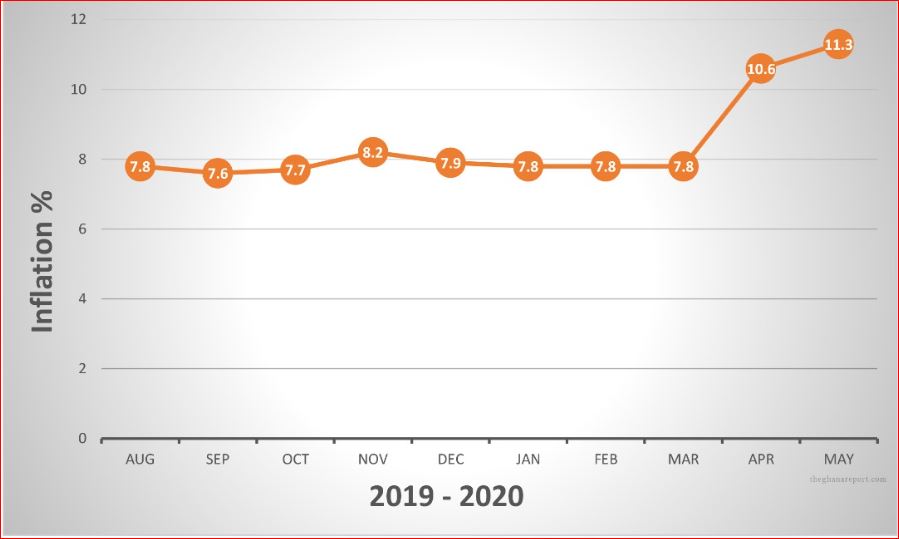Ghana has registered the highest inflation figure since the adoption of the new series in August 2019 due to increasing food prices.
The latest figures from the Ghana Statistical Service (GSS) showed 11.3% inflation for the month of May 2020 to make it the highest.
The latest figures have pushed inflation beyond the government’s target band of 8.0 ± 2, on the back of a cut in the policy rate from 16% to 14.5 in March.

The ripple effects of the cuts aimed at stimulating economic growth amidst the coronavirus might have increased excess liquidity, pushing inflation upwards.
This comes amidst the coronavirus scourge which has ravaged several countries across the globe, slowing down the importation of goods to Ghana.
The few in the system are being hoarded, and traders are raising the prices of the products.
Additionally, there were fears of a potential lockdown in May after the government lifted an initial three-week partial restriction in April, as the country’s cases surged.
With Ghana’s cases rising and scheduled addresses by President Nana Akufo-Addo, some traders resorted to hoarding of products. Coupled with scarcity of some food products on the back of a slow return to production, prices were significantly affected.
The GSS said the latest figure was “0.7 percentage points higher than last month”, with food contributing 56 percentage points to the increase.
Details of May 2020 inflation
April 2020 and May 2020 was 1.7%. This is lower than the 3.2% recorded between March and April 2020, but higher than the average month-on-month inflation recorded in the months October 2019 to March 2020 (0.7%).
At the regional level, the overall year-on-year inflation ranged from 3.1% in the Upper East Region to 13.3% in Greater Accra.
When comparing Food to Non-Food inflation, there are clear differences between regions.
Ashanti (22.3%) and Western Region (19.8%) had the highest rates of Food inflation, while Eastern Region saw the highest Non-Food inflation (12.8%).
The Upper East, Northern, Eastern, and Volta Regions experienced higher Non-Food than Food inflation, the opposite was true for the other six regions. The month-on-month inflation rate between regions also differ.
The overall month-on-month inflation was between -1.5% in the Volta Region and 3.9% in the Ashanti Region.
The Western Region recorded a month-on-month Food inflation rate of 6.9%, while the Volta Region saw a decrease of -3.3%. Greater Accra saw overall month-on-month inflation of 0.7% and a Food month-on-month inflation of -0.4%.
The national year-on-year inflation rate was 11.3% in May 2020, which is 0.7 percentage points higher than last month.
Month-on-month inflation between April 2020 and May 2020 was 1.7%. This is lower than the 3.2% recorded between March and April 2020, but higher than the average month-on-month inflation recorded in the months October 2019 to March 2020 (0.7%).
Only two of the thirteen divisions had higher than average inflation rates; Food and Non-Alcoholic Beverages and Housing, Water, Electricity and Gas.
















